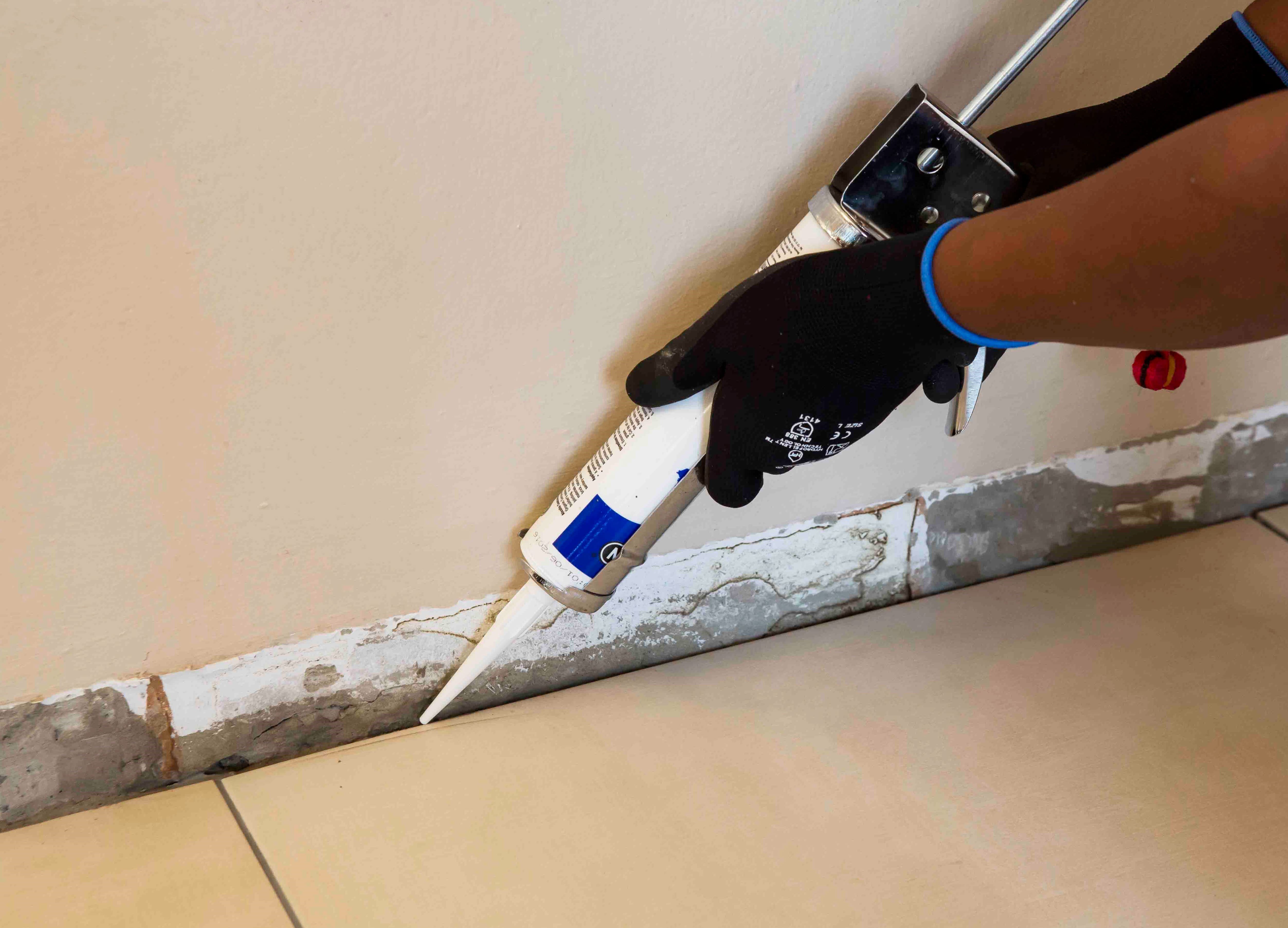Tips when installing wood-look tiles
TAL X-Calibur developed a new decorative screed that was recently used as a final floor solution in a residential home in Copperleaf Estate, Benoni.
TAL X-Calibur X-Tech SuperFlow was developed in collaboration with TAL X-Calibur and Rock Solid Flooring and is manufactured locally under license from X-Calibur Construction Chemistry Incorporated.
TAL X-Calibur X-Tech SuperFlow is a cement based, self-smoothing, decorative screed available in a wide range of colours. The system is designed to produce a hard wearing and seamless decorative floor surface suitable for light commercial and residential interior applications.
The product is rapid-setting and shrinkage compensated. TAL X-Calibur X-Tech SuperFlow allows for fast track installation, it’s self-smoothing and therefore reduces labour cost; it is also casein and protein free, provides a seamless finish and is easy to clean. It is designed for interior applications only.
Tests conducted by the South African Bureau of Standards (SABS) show that TAL X-Calibur X-Tech SuperFlow has a compressive strength in excess of 25MPa at 28d. SABS is conducting a wide range of performance tests on the product to give customers confidence that they are getting a state of the art product.
TAL X-Calibur X-Tech SuperFlow is suitably designed for application onto concrete substrates. The surface can be subjected to light foot traffic after four hours, depending on application thickness and ambient conditions. The floor can be subjected to full service conditions after approximately 30 hours, temperature dependent.
Application of TAL X-Calibur X-Tech SuperFlow should only be carried out by experienced contractors. Once TAL X-Calibur X-Tech SuperFlow is fully cured, it must be lightly scoured using a black scouring pad on a polishing machine. This will ensure that the floor is smooth and free from residue left over during the curing stage.
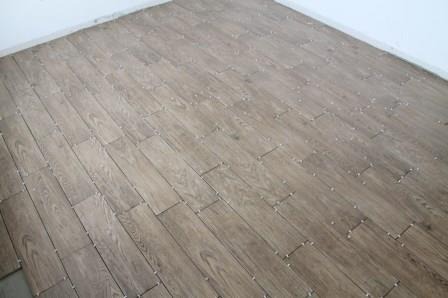

Installing wood-look tiles requires a bit of time and dedication, especially when the aim is to achieve natural wooden flooring patterns. Wood-look tiles with different shades per tile or box should be laid randomly, not according to the colours.
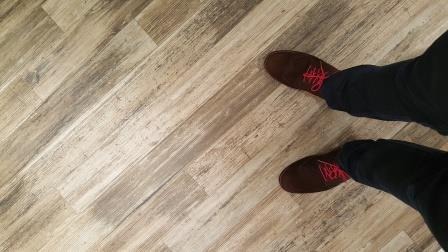

Many wood-look tiles are the length of (wood) planks and as such are 'large format tiles', which is a tile with the length of at least one edge equal to or greater than 600mm, or a facial area greater than 3500cm2. There are permissible manufacturing tolerances for ceramic and porcelain tiles, and large format tiles may have permissible surface flatness irregularities (i.e.: the tile surface may be 'curved' or 'bowed'). If this is not taken into consideration when planning the installation there is a risk of tile 'lipping' occurring. Lipping is when the edges and corners of the tiles stand proud from one another.
To minimise the risk of lipping it is important to ensure that the floor is level before starting the installation. TAL SCREEDMASTER, a self-smoothing underlayment, may be installed to achieve the required surface finish. Learn how to create a level and hardwearing floor surface through this TAL Talk blog post.
Laying of tiles in a brick or running bond pattern should also be carefully considered because of potential lipping caused by the curvature of large format tiles. A maximum offset of 30% is recommended.
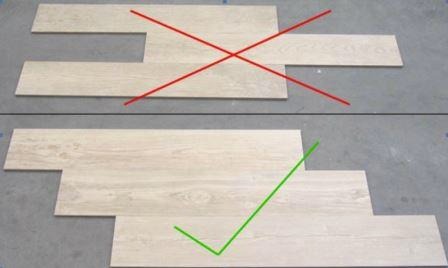

INSTALLING THE TILES
The first piece of each row should then be measured and cut to achieve the desired brick or running bond pattern. We recommend 'back buttering' of large format tiles with a thin coat of adhesive to ensure full contact with the prepared surface – this, in addition to applying the adhesive to the substrate using a suitable notched floor trowel, to ensure a solid bed of adhesive behind each tile.
Be sure to make use of the correct adhesive when fixing the tiles to the prepared surface. We offer a range of cement-based tile adhesives from rapid or quick to standard setting, in a grey or white colour. Click here to find out what adhesive is right for your choice of tile.
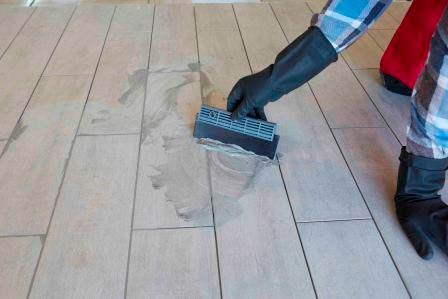

Also ensure that the spacer size you use is correct for the type of tile you have selected; the joint width between glazed ceramic floor tiles should be a minimum of 5mm wide, and a minimum of 3mm wide between porcelain tiles, including rectified porcelain tiles. To achieve the natural look, opt for grout colour that is darker than the tile itself. Click here to find out more about how to select the perfect grout colour.
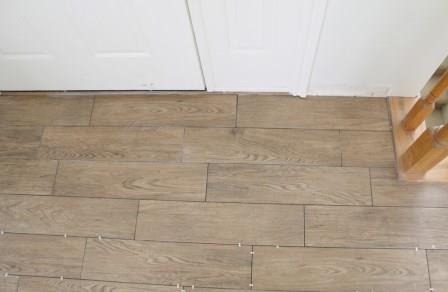

MOVEMENT JOINTS
Allowance for movement (building, thermal and moisture) must be made in all tile installations. Perimeter joints must be installed around the perimeter of all floors and around any fixtures protruding through the tile installation, such as walls, columns and stairs. Intermediate tile panel movement joints should also be installed at maximum 5 metre centres in both directions for interior surface bed applications, and maximum 3 metre centres for suspended slabs and exterior applications. These joints must be a minimum of 5mm wide, must extend through the tile and tile adhesive layers to the substrate, and must be filled with a good quality resilient joint sealant and suitable backing cord.
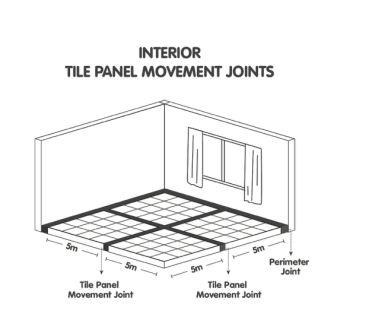



When using large format tiles (a tile with the length of at least one edge equal to/greater than 600mm, or a facial area greater than 3500cm²) there will be a smaller number of grout joints, compared with the same area of normal format tiling. As a result, less stress (movement) can be accommodated at tile joints.
Considering a wood-look tile installation? Give us a call or send usan email and we’ll give the right advice, no matter how big or small your tile installation: 0860000 TAL (825) or [email protected]. If this TAL Talk blog post interested you, you may want to take a look at this TAL Talk blog post: The 101 on wood-look tiles.
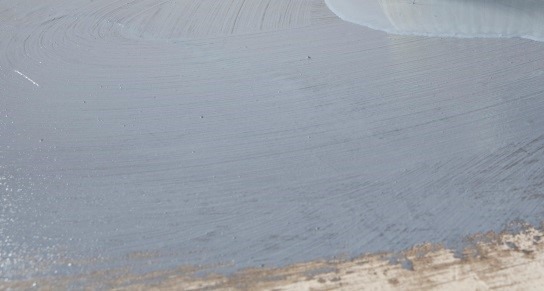

Complete the waterproofing system by replacing the water in the grout mix with TAL Bond, a latex additive, as this further increases the water resistance and flexibility of the installation.
Get the job right the first time and avoid future headaches from water seeping through and damaging the walls and floors of your home. The additional cost and effort of properly waterproofing your shower is an investment in your property and will ensure a beautiful and functional bathroom for years to come.
For more information on multi-level waterproofing systems, contact a TAL Expert on 0860 000 TAL (825), email us or watch our how-to video on YouTube for step-by-step advice on how to waterproof a shower.
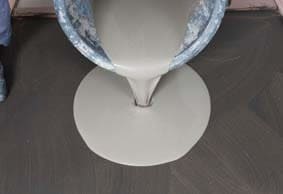

STEP 8
Roll the area using a TAL Spiked Roller to facilitate the release of any trapped air to produce a smooth surface, and to allow it to dry.
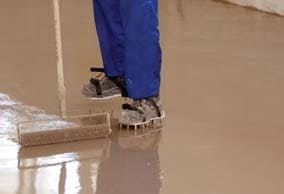

Allow the screed installation to dry for 24 hours before subjecting to foot traffic (or other trades) or installing floor coverings.


TAL MOSAICFIX is available in 20 kg and 5 kg bags from leading retail outlets.
Designed to be 100% compatible, using the TAL range of products ensures fully guaranteed multi-level tiling systems from a single source. TAL products are manufactured in South Africa to suit local climatic conditions.
If you are in any doubt, contact the TAL Technical Advisory Service on 0860 000 TAL (825), email [email protected]. Alternatively, employ the services of an experienced and skilled mosaic tiling contractor.




When replacing tiles, it is not always possible to apply the TALFIX directly to the floor, in which case apply the adhesive in a solid bed onto the back of the tile, ensuring complete coverage. Gently trace the notched side of a floor trowel through the adhesive to create ‘ridges’.


Adhesive system
When tiling onto existing tiles, it is important to only use a quick- or rapid-setting adhesive, as the existing tiles will present a dense, impervious surface, and standard-setting adhesives will take longer to dry. Too early trafficking of newly-installed tiles before the adhesive has set sufficiently can result in hollow-sounding or loose tiles.
Use TAL Tile-To-Tile quick-setting adhesive for tiling onto interior surface beds. When tiling onto suspended slabs and for external installations mix the TAL Tile-To-Tile with TAL Bond, replacing the water in the mix. Alternatively, TAL Bond Powder can be added to the adhesive mixing water.
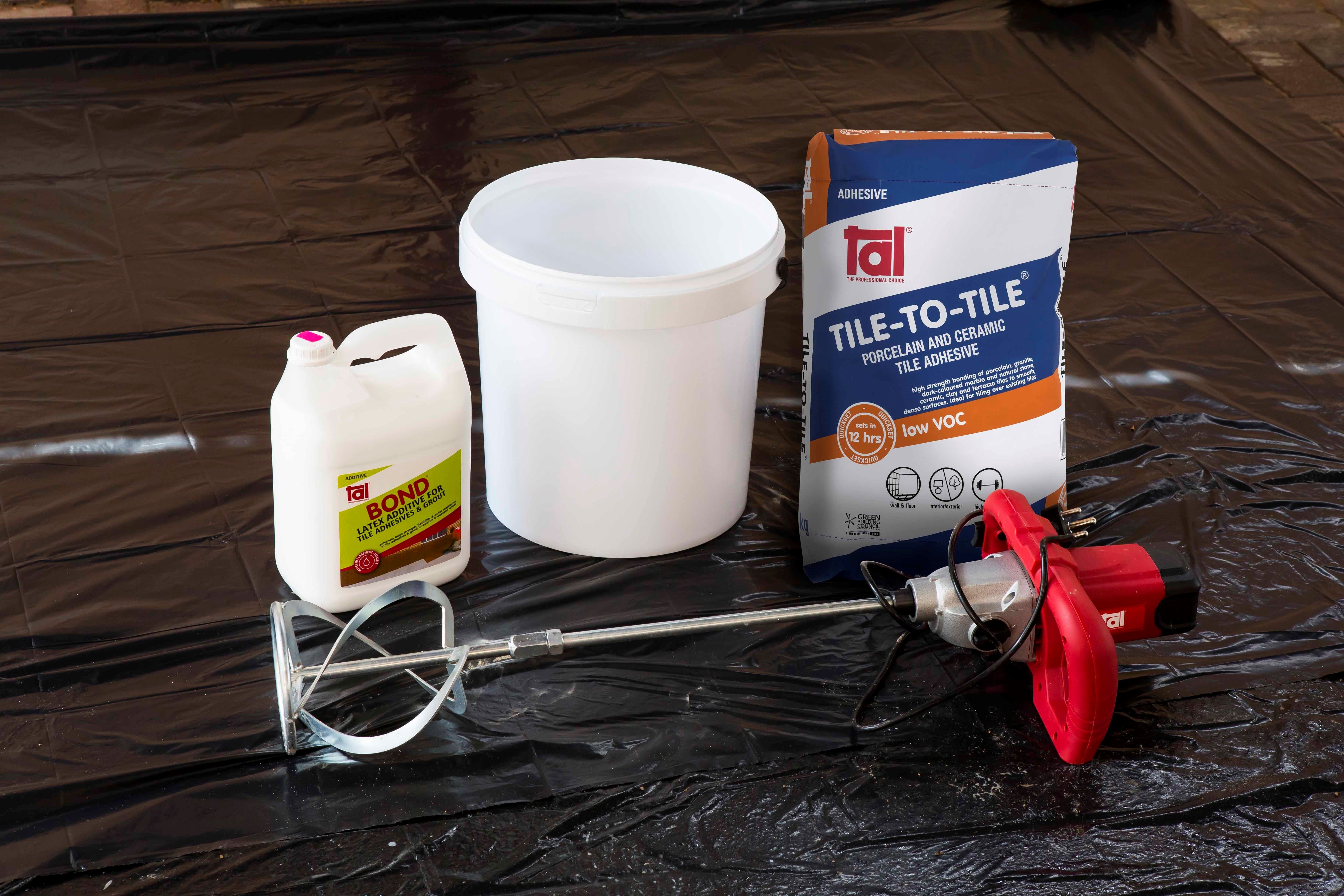

Ensure that there is a solid bed of adhesive at least 6 mm thick beneath each tile.
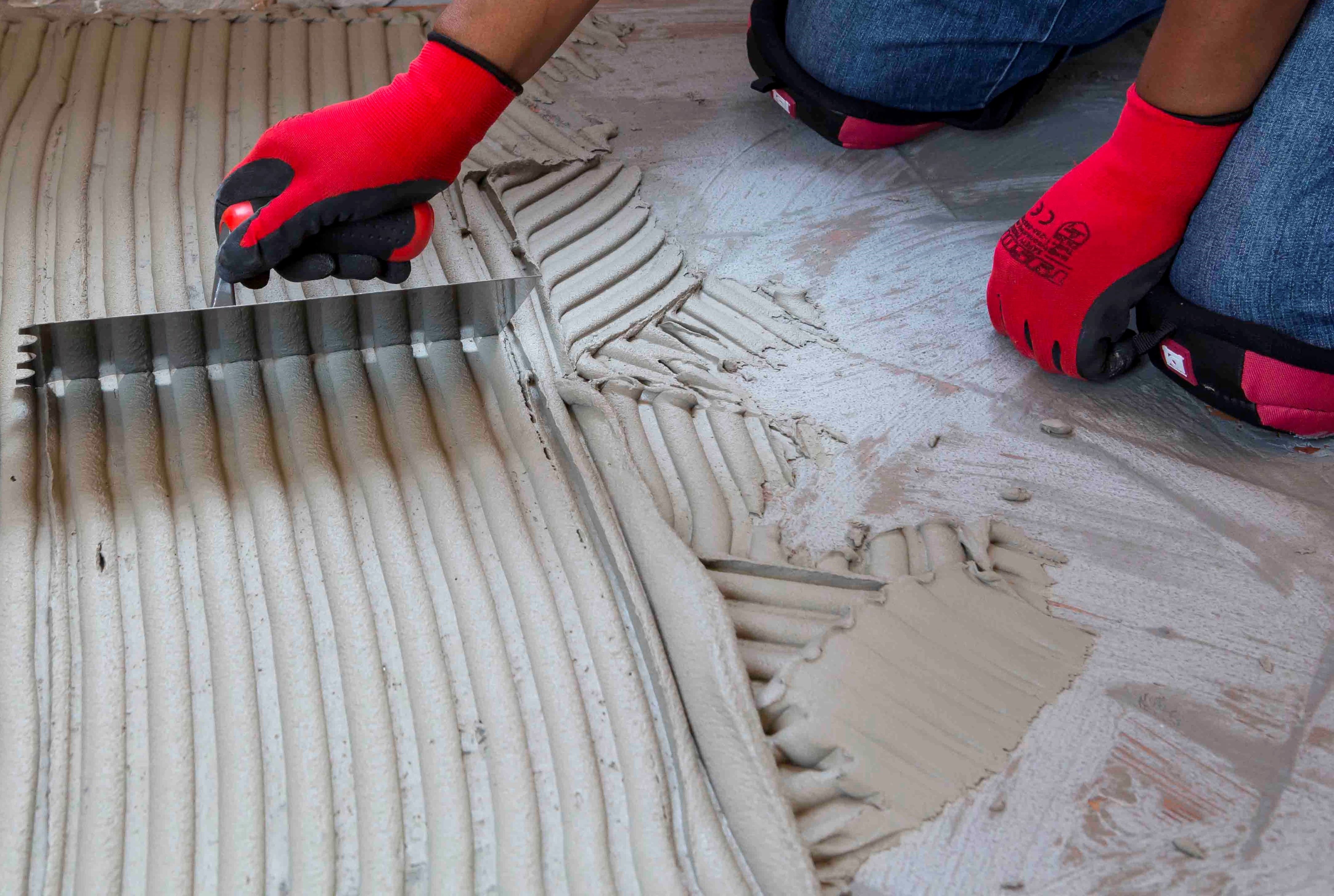

Back buttering with a thin coat of adhesive may also be required when using large-format tiles to ensure full contact with the adhesive bed.
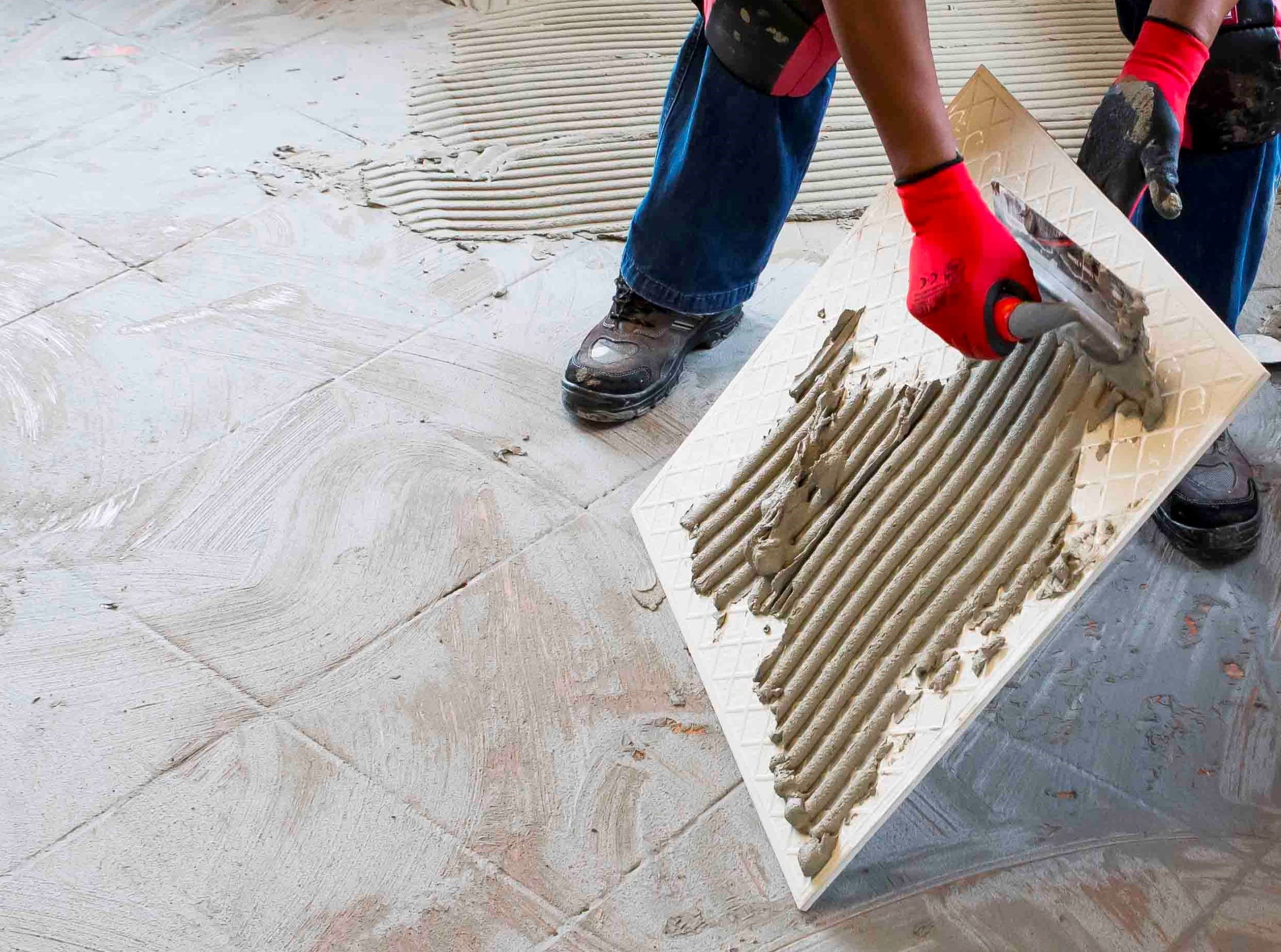

Grouting
Grouting should not be carried out until the adhesive has set sufficiently to prevent the tile installation from being disturbed during the grouting operation (always refer to the adhesive packaging for setting times). When using TAL TAL Tile-To-Tile, allow a minimum of six hours before grouting.
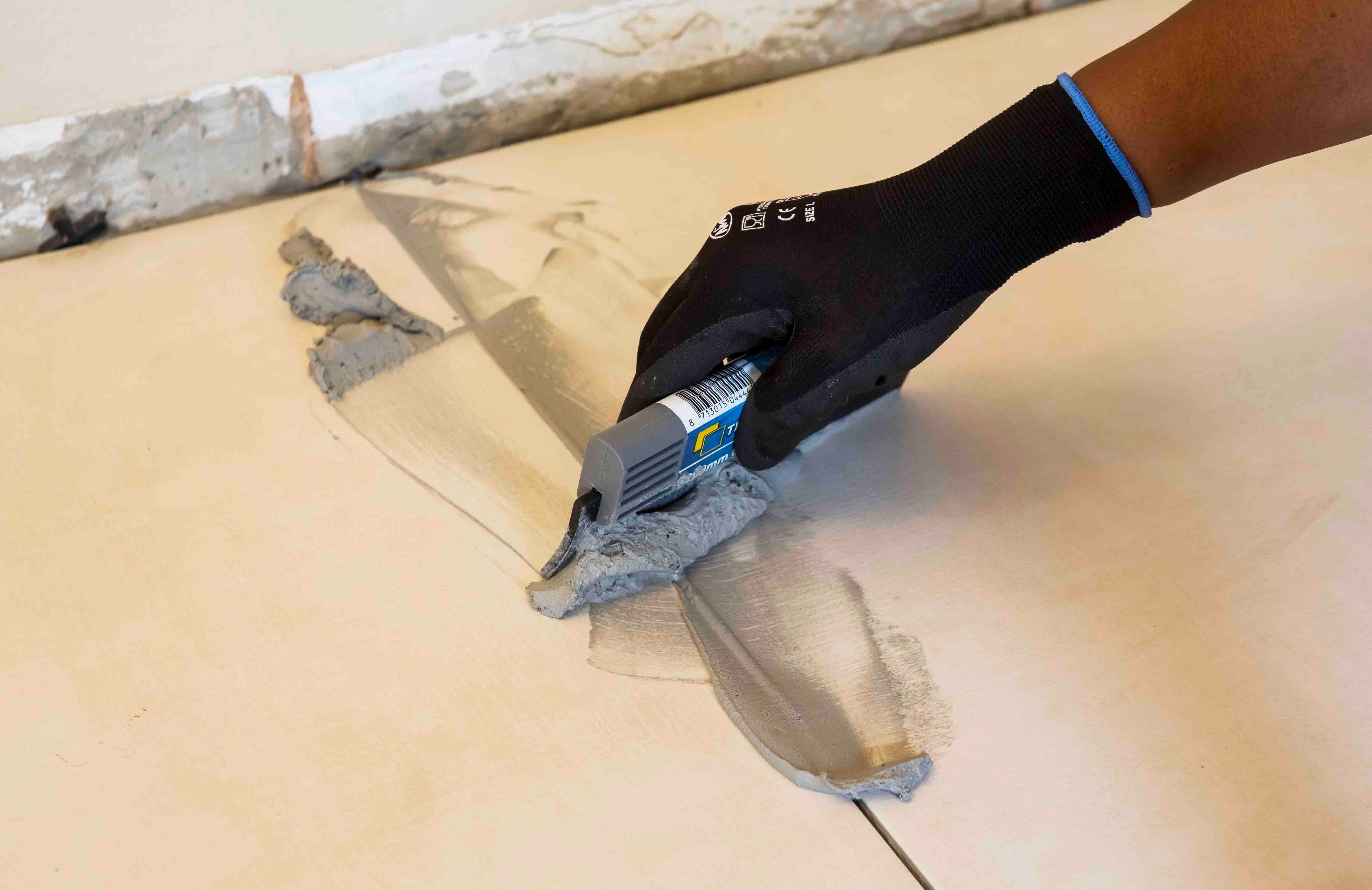

For interior surface beds, use TAL Wall & Floor Grout for filling tile joints up to 8 mm wide. TAL Quarry Grout can be used in wider joints up to 25 mm wide. On suspended slabs and for external installations, replace the water in the grout mix with TAL Bond, or add TAL Bond Powder to the grout mixing water.
Particular care must be taken to clean the grout off the tile face before it hardens completely. This is especially important when an additive such as TAL Bond or TAL Bond Powder has been used. A tile sample should be tested beforehand to ensure that no grout is absorbed through the glaze or into the tile body, thereby staining the tiles permanently.
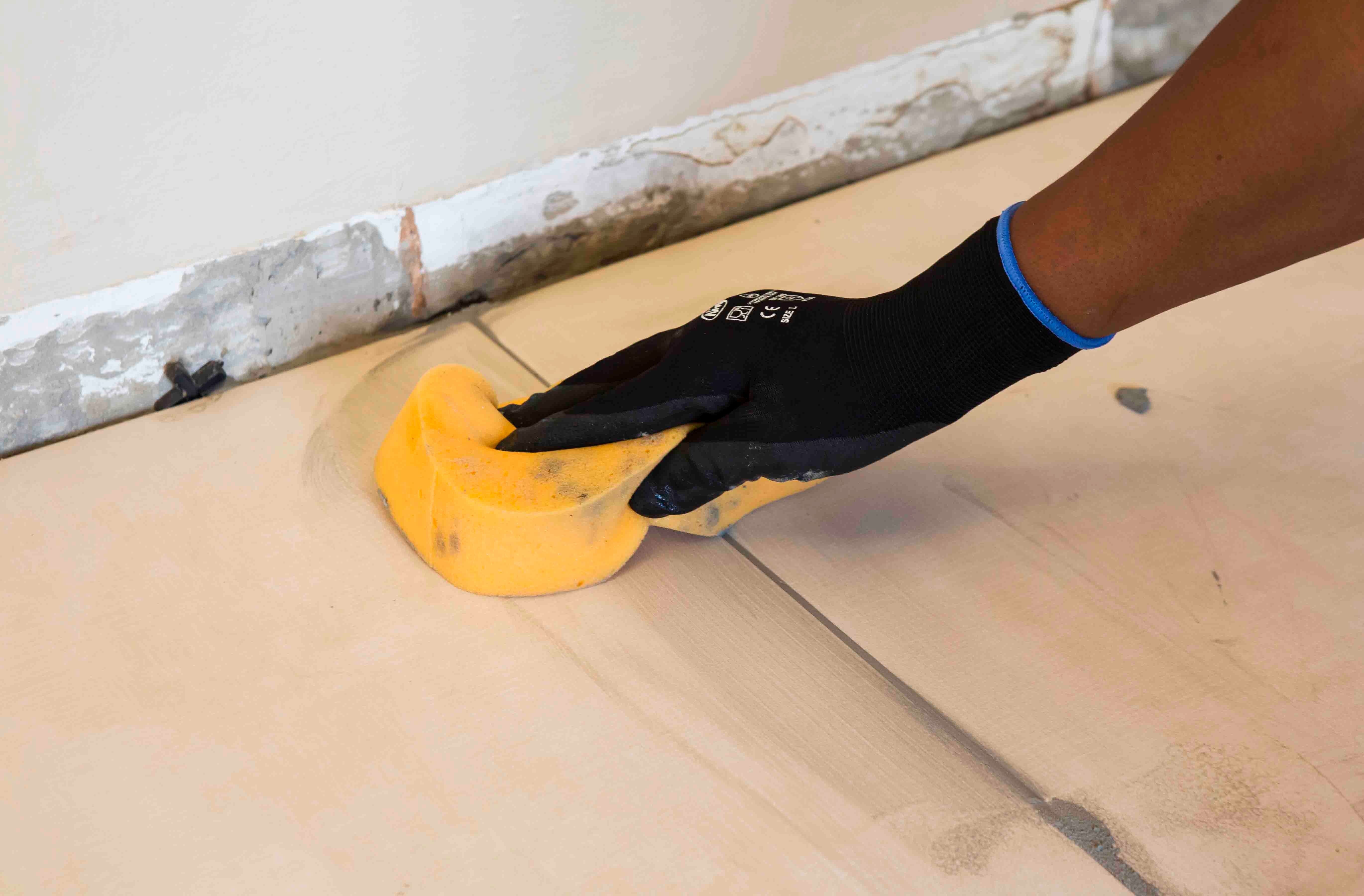

Movement joints
The lack of movement joints in tile installations is a major cause of tile failure. When tiling over existing tiles, the existing structural and movement joints must be maintained in the new tile installation. The movement joints should be at least 5 mm wide and extend through the adhesive and both tile layers.
